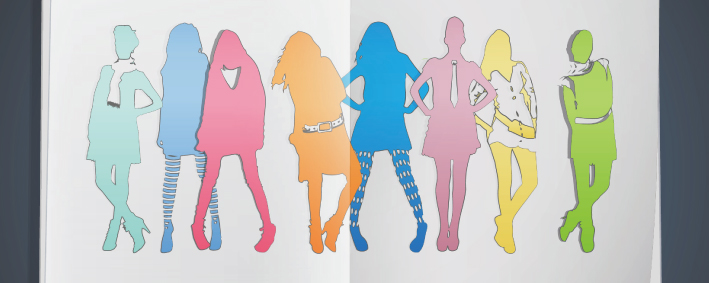 |
CCHU9012 Arts and Humanities
|
Course Description
This course takes students on an exploration of the links between body, beauty and fashion from a variety of perspectives ranging from sociology, social policy, economics, psychology and medicine. These various perspectives together offer students a way of seeing how individual level issues (like self-esteem, stigma and identity) shape and are shaped by community level issues (mass media), societal level issues (gender) and global level issues (globalization and westernization). The course examines these issues in a variety of formats using guest lectures, mass media analysis, video clips, problem solving activities and discussion. The course also focuses on cultural representations and understandings of the human body and ideals of beauty. Although the emphasis is primarily on contemporary Hong Kong society, lectures will also include in-depth analyses of how beauty is culturally constructed and historically situated around the world. To this end, the course is gender inclusive and presents both the female and male perspectives on beauty and body image. In this context, how human bodies and standards of beauty are increasingly influenced by a global media, which promotes a progressively narrow concept of beauty, will be critically discussed. Aside from the media influence on an increasingly globalized interpretation of beauty standards, the course also explores how diet and fashion industries are gaining momentum in shaping beauty ideals. Lectures address other globally and socially constructed aspects of beauty and identity, such as: race, class, culture, ethnicity, sexual identity, age, and ability/disability.

Course Learning Outcomes
On completing the course, students will be able to:
- Describe, explain and differentiate the sociological, psychological, anthropological and biological theories and ideas related to body, beauty and fashion.
- Extrapolate key elements of various theories regarding beauty, body image, fashion and gender and apply to their everyday experiences.
- Assess and critique messages regarding beauty, body image and fashion and place these messages in both a local and global context.
- Demonstrate comprehensive understanding of the complex relationship between gender and beauty and how culture and history impact this relationship.
- Critically assess social messages regarding body, beauty and fashion and discuss the social responsibility of accepting, not judging beauty as they explore alternative concepts of beauty that question conventional definitions.
Offer Semester and Day of Teaching
First semester (Wed)
Study Load
| Activities | Number of hours |
| Lectures | 26 |
| Tutorials | 10 |
| Reading / Self-study | 25 |
| Assessment: Essay / Report writing | 40 |
| Assessment: Presentation (incl preparation) | 30 |
| Assessment: In-class quizzes (incl preparation) | 12 |
| Total: | 143 |
Assessment: 100% coursework
| Assessment Tasks | Weighting |
| Reflective journal | 35 |
| In-class quizzes | 30 |
| Tutorial presentation and participation | 35 |
Required Reading
- Brooks, A. (2019). Clothing poverty: The hidden world of fast fashion and second-hand clothes. Zed Books Ltd.. [Excerpts]
- Feldshuh, H. (2018). Gender, media, and myth-making: constructing China’s leftover women. Asian Journal of Communication, 28(1), 38-54.
- Gibbs, N., Salinas, M., & Turnock, L. (2021). Post-industrial Masculinities and Gym Culture: Graft, Craft and Fraternity. The British Journal of Sociology, 73, 220-236.
- Goffman, E. (1959). The presentation of self in everyday life. In C. Malacrida & J. Low (Eds.), Sociology of the body: A reader (pp. 53-56). Oxford: Oxford University Press. [Introduction]
- Groves, J. M., & Hau-nung Chan, A. (2018). Love in the time of ‘settling’: Forbidden knowledge and modern singles advice. Journal of Sociology, 54(1), 141-155.
- Kam, I. C. P. (2020). Being bitchy and feminine: unfolding the postfeminist account in Hong Kong’s CosmoGirl!. Journal of Gender Studies, 29(4), 431-442.
- Lee, T. K. (2020). Disciplining women in Hong Kong: The discourse of ‘Kong girl’ in the media and daily life. East Asian Journal of Popular Culture, 6(1), 9-25.
- Li, L. C., & Kam, I. C. P. (2019). Gender, Higher Education, and Earnings: The Case of Hong Kong. Gender and the Changing Face of Higher Education in Asia Pacific, 107-125.
- Liong, M. (2017). From Control to Care: Historicizing Family and Fatherhood in Hong Kong. Chinese Fatherhood, Gender and Family, 39-71.
- Rochelle, T. L., & Hu, W. Y. (2017). Media influence on drive for thinness, body satisfaction, and eating attitudes among young women in Hong Kong and China. Psychology, health & medicine, 22(3), 310-318.
- Song, K. Y., & Velding, V. (2020). Transnational masculinity in the eyes of local beholders? Young Americans’ perception of K-pop masculinities. The Journal of Men’s Studies, 28(1), 3-21.
- Wong, H. W., & Yau, H. Y. (2016). The anthropology of Chinese masculinity in Taiwan and Hong Kong. Changing Chinese masculinities: From imperial pillars of state to global real men, 1, 220.
Course Co-ordinator and Teacher(s)
| Course Co-ordinator | Contact |
| Professor K.A. Laidler Department of Sociology, Faculty of Social Sciences |
Tel: 3917 2059 Email: kjoe@hku.hk |
| Teacher(s) | Contact |
| Dr C.K.M. Tong Department of Sociology, Faculty of Social Sciences |
Tel: 3917 4641 Email: ckmtong@hku.hk |
| Dr L.F. Cho Department of Sociology, Faculty of Social Sciences |
Tel: 3917 4641 Email: lifcho@hku.hk |

